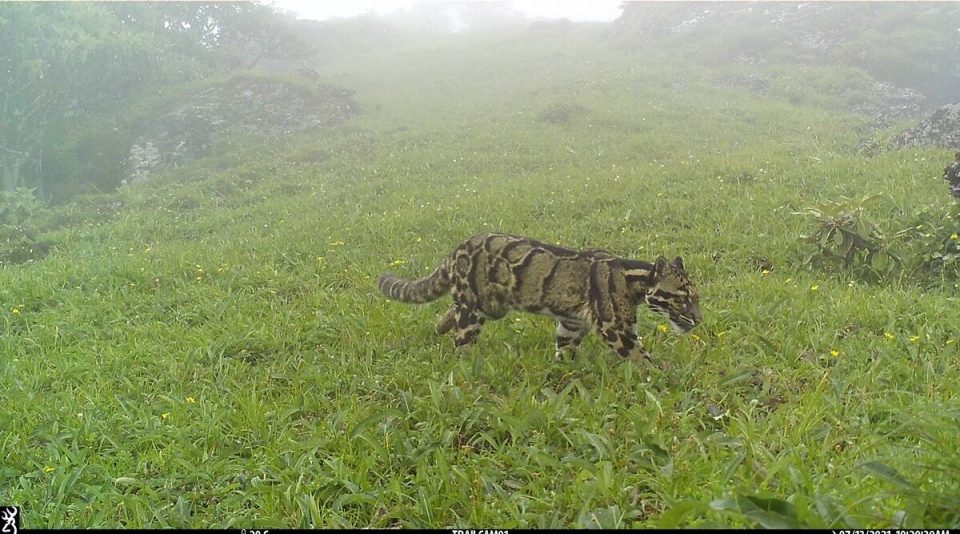
Clouded leopards found in Nagaland’s high-altitude areas for the first time

Researchers have found clouded leopards at an elevation of 3,700 metres in a community-owned forest in Nagaland.
The findings have been published in the Winter 2021 issue of Cat News, the IUCN/Species Survival Commission (SSC) Cat Specialist Group’s biannual newsletter.
The clouded leopard (Neofelis nebulosa), a medium-sized felid (a mammal of the cat family), is the smallest of the large wild cats and is categorised as ‘Vulnerable’ under the IUCN Red List of Threatened Species. They are largely known to inhabit low-elevation evergreen rainforests.
The researchers, led by the Delhi-based nonprofit Wildlife Protection Society of India (WPSI), recorded camera trap images of the animals at 3,700m in the community forest of Thanamir village in eastern Nagaland’s Kiphire district. The forest, measuring 65 square kilometres, has Nagaland’s highest peak, Mount Saramati.
The survey was part of a collaborative initiative between the WPSI and Thanamir village to document the area’s biocultural diversity.
The team included five villagers from Thanamir. It placed more than 50 camera traps in the forest — first between January-June 2020, and then between July-September 2021.
“In total, we have evidence of at least two adults and two cubs. Two distinct individuals were photo captured at a camera placed above the tree line at 3,700 m close to the summit of Mt Saramati. Another individual was photo captured at 3,436m,” said a part of the peer-reviewed publication, authored by Ramya Nair, Alemba Yimkhiung, Hankiumong Yimkhiung, Kiyanmong Yimkhiung, Yapmuli Yimkhiung, Toshi Wungtung, Avinash Basket and Sahil Nijhawan.
Nijhawan, a conservation anthropologist who works in Arunachal Pradesh, and is advisor to the WPSI initiative, said the findings were especially significant because the population included breeding individuals. “They are residents of the area, and are reproducing there, which indicates that there is enough food and forest cover for them to do so,” he said.
Little is known about the “stunning and beautiful” clouded leopards, which are usually found in tropical rainforests, “full of trees”, he added. “But we have found them at heights above where the trees end.”
There are previous reports of presence of clouded leopards at high elevations, but in state-protected areas, including Sikkim (3,720m), Bhutan (3,600m) and Nepal (3,140m). According to Nijhawan, the fact that the Nagaland sighting is in a community forest reflects that such areas, even if not protected by law, host a wealth of biodiversity.
“Traditionally, across India, forest and wildlife is protected by law enforcement. While this may work in the rest of the country, in the Northeast, much of the forests are owned by local communities,” he said. “Villagers use these forests, yet they support amazing biodiversity, which are globally threatened.”
Other species photographed in the survey include Asiatic black bear, yellow throated marten, stump-tailed macaque, Assamese macaque as well as the Asiatic golden cat, marbled cat and leopard cat.


